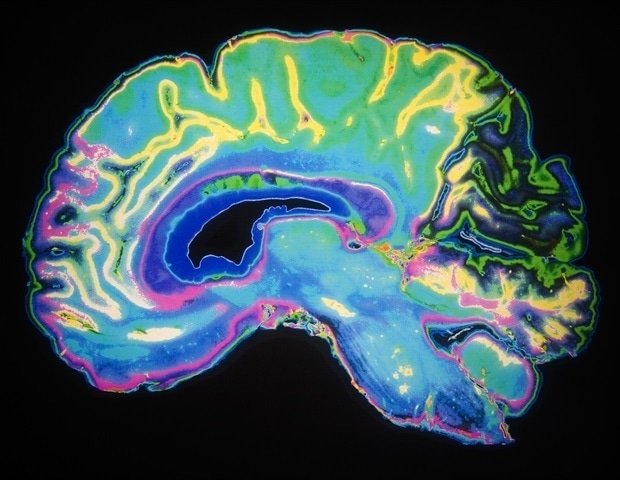A common type of brain hemorrhage in older adults, known as subdural hemorrhage, is associated with the presence of amyloid deposits in the brain’s blood vessels, according to a study led by researchers at Weill Cornell Medicine, NewYork-Presbyterian and Yale School of Medicine. The study is the first to link cerebrovascular amyloid with subdural hemorrhages and should lead to a better understanding of both conditions.
For the study, which is published Dec. 26 in JAMA Neurology, researchers analyzed two large population-based cohorts covering more than 600,000 participants in the United Kingdom and the United States. They found that patients with amyloid deposits in brain vessels – a condition called cerebral amyloid angiopathy (CAA) – were at least five times more likely to experience subdural bleeds, compared to patients without CAA.
Currently, clinicians generally do not consider isolated subdural hemorrhages as part of the spectrum of cerebral amyloid vasculopathy. So, if this link is established, then clinicians will begin to screen and evaluate patients with subdural hemorrhage for underlying CAA, which would be an important paradigm shift and could lead to better care and better outcomes.”
Dr Santosh Murthy, co-senior author of the study, associate professor of neurology at Weill Cornell Medicine and associate chief of neurocritical care at New York-Presbyterian/Weill Cornell Medical Center
The other co-senior author of the study was Dr. Guido Falcone, an associate professor of neurology at the Yale School of Medicine. The study’s first author was Dr. Cyprien Rivier, a postdoctoral fellow in the Falcone lab.
Subdural hemorrhages are hemorrhages from blood vessels that occur on the outer surface of the brain beneath its larger covering membrane, known as the dura mater. They result in trapped blood called subdural hematomas, which can put dangerous pressure on the brain and usually require surgical removal. Subdural hemorrhages affect nearly 125,000 Americans annually and, due to an aging population, are on track to become the most common reason for brain surgery among adult patients.
CAA features aggregates of amyloid beta protein in the walls of blood vessels in and just above the brain. The condition is very common in older adults – especially in Alzheimer’s patients, who also have amyloid deposits in other brain tissues. However, although CAA can cause bleeding from any of the vessels in which it is located, neurologists generally consider subdural hemorrhage to be a separate clinical phenomenon, caused primarily by mechanical stresses on the vessels due to age-related brain shrinkage.
Even so, there have been hints of a connection between the two. About one-fifth of patients with CAA brain hemorrhages also have coexisting subdural hemorrhages, and there is some evidence that subdural hemorrhages are more common when CAA signs are more prominent on brain MRI scans. Drs. So Murthy and Falcone and their colleagues set up the new study as an initial investigation of this possible link.
Their analysis used two ongoing, long-term, population-based health studies, the UK Biobank Program and the US National Institutes of Health. all of us Research Program, which includes data from participants enrolled by the New York Consortium of Irving University Columbia Medical Center, Weill Cornell Medicine, NYC Health + Hospitals/Harlem, and NewYork-Presbyterian. In data sets covering a total of 645,231 subjects, they compared the rates of subdural hemorrhages in those with and without a prior diagnosis of CAA.
In the largest UK-based data set, 3 of 126 subjects with CAA and 649 of 487,097 without CAA had subdural hemorrhage during a mean follow-up period of approximately 20 years. In the researchers’ analysis, this indicated an approximately 7.6-fold greater risk of subdural bleeding for the CAA group. Confirming the link, the researchers estimated an approximately 5.2-fold greater risk for patients with CAA in the US data set.
The authors cautioned that while this apparent statistical association does not, by itself, imply that CAA causes subdural hemorrhages, it encourages further investigation.
“The next logical step is to do a multicenter prospective study looking for the presence of amyloid using PET scans in patients presenting with isolated subdural hemorrhage,” Dr. Murthy said.
There are currently no specific treatments for CAA. It is possible that anti-amyloid therapies, which have recently been approved for use in Alzheimer’s disease, will be tested in patients with CAA in the future. But in principle, Dr. Murthy added, screening patients with subdural hemorrhage for CAA could reveal many patients who would benefit from such treatments when they become available.
The work described in this study was supported by the National Institute of Neurological Disorders and Stroke, part of the National Institutes of Health, under grant number K23NS105948.
Source:
Journal Reference:
Rivier, CA, et al. (2023). Cerebral amyloid angiopathy and risk of isolated nontraumatic subdural hemorrhage. JAMA Neurology. doi.org/10.1001/jamaneurol.2023.4918.
